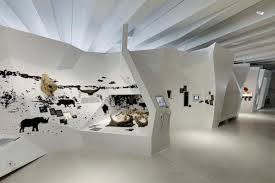In art exhibitions and private displays, the way artworks are arranged is an art in itself. Lighting, spatial proportion, and the placement and materials of the exhibits all influence the audience’s visual online gaming experience and emotional resonance.
Generally, curatorial design follows the principle of “emptiness and focus”: emptiness gives the space breathing room, while focus ensures that the artwork gains proper visual weight.

Review Aesthetics of Exhibition & Spatial Display
Lighting is one of the most crucial factors. Soft diffused light works well for paintings and photography, while spotlights emphasize the three-dimensionality of sculptures or installations.
At the same time, the design of the viewing path is equally important. From the moment the audience enters the gallery to when they leave, the journey should create a natural visual narrative rather than a sense of randomness.
In certain displays, curators may choose to use mannequins or static human figures to enhance the atmosphere. For instance, some highly detailed art models, such as a realistic doll, are occasionally incorporated into exhibitions as auxiliary display elements due to their lifelike appearance and texture. These props can even integrate a voice system, enabling simulated interaction and offering visitors a more immersive experience.
Beyond realism, variations in form and proportion can also enrich the exhibition space. Minimalist silhouettes or slim figures often highlight the beauty of clothing, jewelry, or other smaller artworks.
In certain private display spaces, some exhibits may even use a slim doll as a static model, allowing the artwork to stand out more prominently through proportional contrast.
Final Thoughts
In summary, exhibition design is a comprehensive art that combines aesthetics and spatial planning. The flexible use of props and display elements is not only about supporting the artworks themselves but also about shaping the emotional connection between the audience and the art. Those occasional special cases highlight the ongoing exploration and innovation within the practice of exhibition display.
